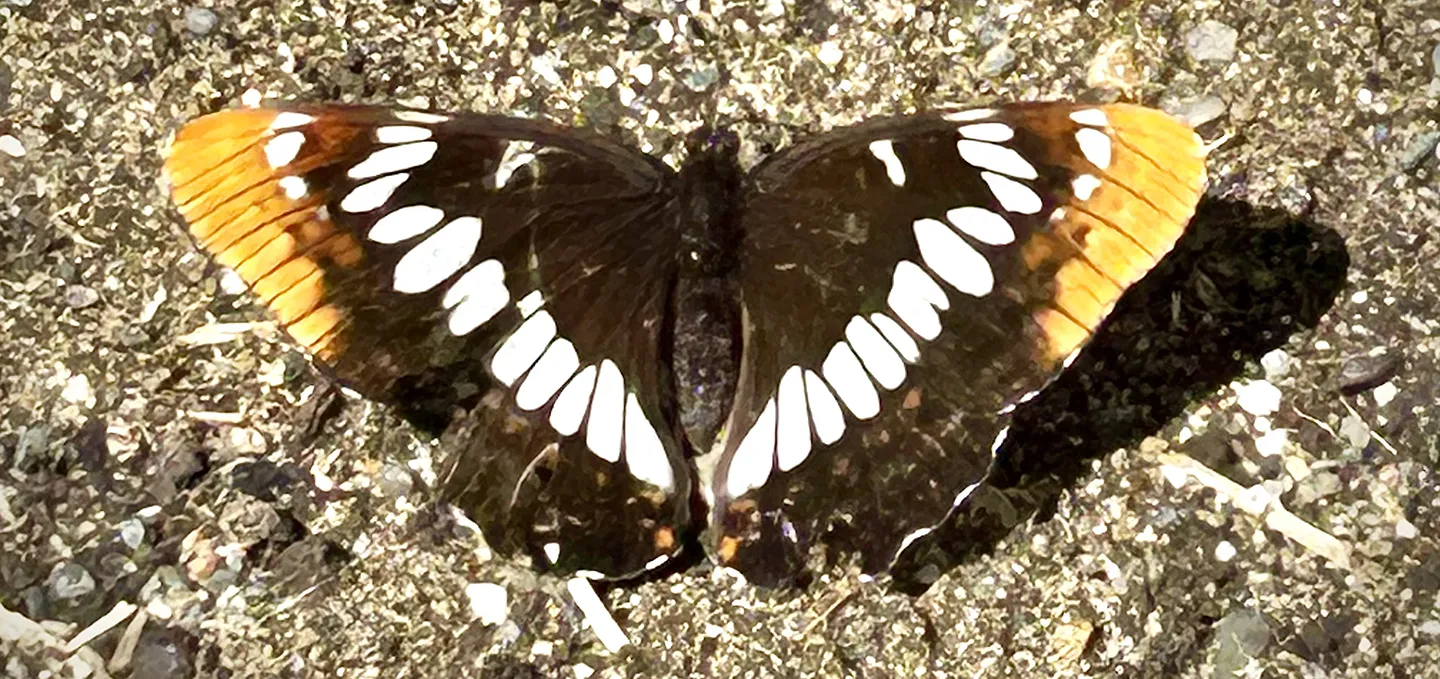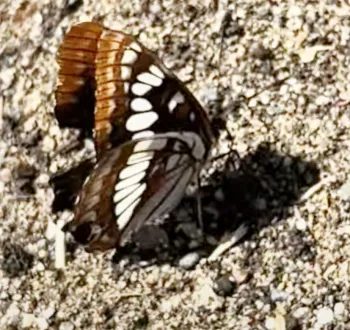
What a delight to see!
When Fairfield resident and butterfly aficionado Marilyn Sexton spotted on her patio a butterfly that she'd never seen before, she grabbed her cell phone and took some images and a video.
Brown-black wings, each lined with a row of white spots. Orange tips on the forewings.
The butterfly? Lorquin's admiral (Limenitis lorquini) in the Nymphalinae subfamily, and a butterfly that UC Davis Distinuished Professor Emeritus Art Shapiro has reported as "on the decline."
Shapiro, who has monitored the butterfly populations of northern and central California since 1972, says on his website, Art's Butterfly World, that "Since the late 1990s, this species has been in precipitous and unexplained decline in the Sacramento Valley, becoming extinct in North Sacramento and Rancho Cordova and flirting with extinction in West Sacramento; there has been no decline in montane populations, and indeed Lorquin's Admiral seems to have become commoner in Sierra Valley in the same period."
"A characteristic riparian species from sea level to at least 8000', flying along willow-lined streams and perching territorially. It appears to mimic the inedible California Sister, with which it often occurs," he noted. "Adults visit California Buckeye, Buttonbush, Yerba Santa and a variety of other flowers, and males are enthusiastic puddlers.

"Sierran and Sacramento Valley specimens are strongly violet-tinged beneath. Coast Range ones tend to be distinctly redder. Valley specimens are often quite small. Lorquin's Admiral hybridizes with Weidemeyer's Admiral (L. weidemeyeri) southeast of our area; the farthest north any sign of hybrid influence has been detected is Topaz Lake."
The butterfly is named after French entomologist Pierre Joseph Michel Lorquin (1797-1873), who arrived in California from France during the Gold Rush. He specialized in Lepidoptera (moths and butterflies) and Coleoptera (beetles). Another butterfly, Papilio lorquinianus, also bears his name.
Lorquin's admiral is found near willows, and yes, there's a willow near the Sexton home. Shapiro identified the butterfly as a female.
"The host plants," Shapiro writes, "are willows--in my experience, only the glabrous, green-leaved ones-and the species has 2 broods at Donner and 3 in the Valley, where it flies--not continuously--rom April to October. Larva seems to mimic a bird dropping."
Guess who'll be paying more attention to willows? And looking for what appear to be bird droppings?
(See what Art Shapiro said about the decline of butterflies on this Bug Squad blog)

